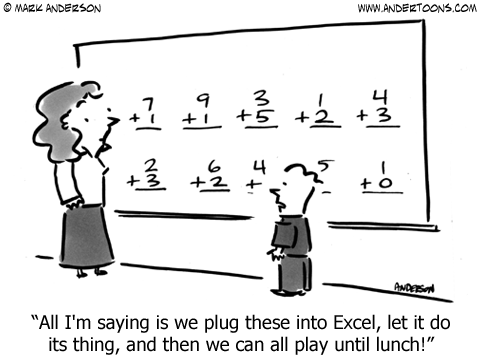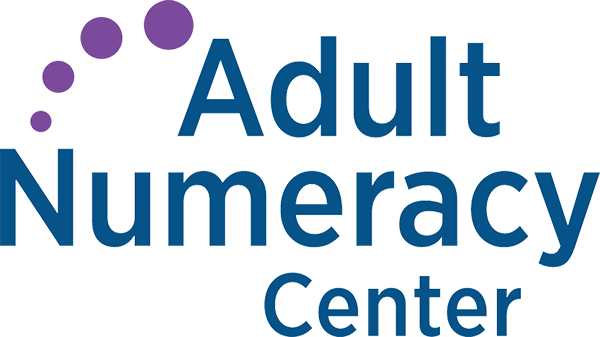Calculator Use in Adult Education
by Melissa Braaten
Calculators are something that both teachers and students seem to have strong opinions about. Some cling to them like a magical tool that will solve all of their math woes, while others blame them for the decline in mathematical fluency. I don’t find either of these attitudes helpful. A calculator can be a useful and powerful tool, but only in the hands of someone who knows how and when to use it. As a teacher, I try to be strategic in terms of when and how I allow calculators to be used in class, and I also work to engage students in making their own strategic decisions about when and how to use the calculator and other mathematical tools at their disposal.
Like all math teachers, I would like to avoid students using the calculator in place of mathematical reasoning. For example, some of my students come to me having learned in the past that they can find fractional parts by multiplying the decimal form by the whole. For example, if asked to find one fourth of 500, they would multiply .25 X 500. I always affirm the correctness and usefulness of this method, but I also strongly encourage students to connect ¼ with the operation of dividing the whole into four equal parts, which is a far more visual and intuitive understanding of one fourth that many of my students lack. In a unit on benchmark fractions, for example, I may still provide calculators, but I will ask students to solve the problems without the use of decimals, forcing them to think about the fractions, what they mean, and how they can use division and multiplication to make sense of the fractions themselves. For many, multiplication by a decimal is not something they intuitively understand, but rather a “trick” that they have been taught.
When deciding when and how to use calculators in the classroom, I consider my class objectives. For example, when beginning a unit in my GLE 1-4 class on division, I had some students who could use the long division algorithm quite fluently, others who wanted to learn it, but no one who really understood when it was appropriate to use division when faced with a simple scenario or word problem. In that case, I asked students not to use either calculators or the algorithm while we explored visual models and concepts of division as equal sharing. For that end, slowly passing out the quantities into different piles and discovering different strategies for doing so was more important than efficient calculation of an answer. I wanted my students to develop operation sense, an understanding of what division looks like and how it relates to other operations, so they could go on to identity partitive (sharing) situations and develop methods for mental estimation of division problems. Without these underpinnings, even students fluent with the algorithm would not be able to yield it well.
At other times, the calculator is a powerful tool in the classroom. Many students, even in my more advanced level classes, are not completely fluent with arithmetic facts, and the calculator can be part of the scaffolding that allows them to explore more advanced concepts. A student who is not fluent with her multiplication facts may still be able to explore concepts like area or rate, and the calculator can help her keep up with the class. Disfluency with basic facts in adults can have many sources (lack of basic number sense, learning challenges, etc.), but most of them are not quickly remedied. While I want to make sure to give all my students a chance to build their number sense and fluency, I don’t want someone with a learning challenge to be held up forever because he can’t remember basic facts. He can work on his fluency with certain activities, and use the calculator or other tools at other times to help him access more advanced concepts.
An all or nothing attitude towards calculators can have one more unfortunate effect, and that is to rob adult students of the opportunity to become their own arbitrators of when calculator use is appropriate. As a numerate adult myself, I am always weighing the pros and cons of different methods of working with numbers: Are the numbers friendly or is an estimate sufficient? I use mental math. Are the numbers less familiar and I need a high degree of accuracy? It might be worth grabbing the calculator. Am I working with many numbers that I could easily lose track of, or that would be too inefficient to calculate one at a time? Sounds like a case for a spreadsheet![1]

This type of strategic thinking is described in the CCRSAE Standard for Mathematical Practice 5, which is summarized as “Use appropriate tools strategically.” As a teacher, I can help students become more strategic in their use of calculators by explicitly asking them to reflect on different types of problems and which method is most appropriate. I also need to give them opportunities in the structured classroom setting to make those determinations themselves, with some guidance from me. For example, if I see a student using the calculator to divide or multiply by 10, we will probably have a conversation about whether she sees patterns in the results and whether this might be a calculation she could do in her head.
Like any other tool, calculators are only as helpful or harmful as we make them. To help our students develop the math reasoning and application skills they need to be “college and career ready,” we need to use this tool strategically in the classroom and teach our students to do the same.
[1] Pencil and paper algorithms are the method I use least in everyday life – ironic that we often spend so much time on them in math class.
=====================
 Melissa Braaten is an adult education instructor at Catholic Charities Haitian Multi-Services Center in Dorchester, MA. Melissa has taught ASE and pre-ASE math and reading, as well as ABE writing, computer skills, and health classes. Melissa also is a training and curriculum development specialist for the SABES PD Center for Mathematics and Adult Numeracy at TERC.
Melissa Braaten is an adult education instructor at Catholic Charities Haitian Multi-Services Center in Dorchester, MA. Melissa has taught ASE and pre-ASE math and reading, as well as ABE writing, computer skills, and health classes. Melissa also is a training and curriculum development specialist for the SABES PD Center for Mathematics and Adult Numeracy at TERC.
